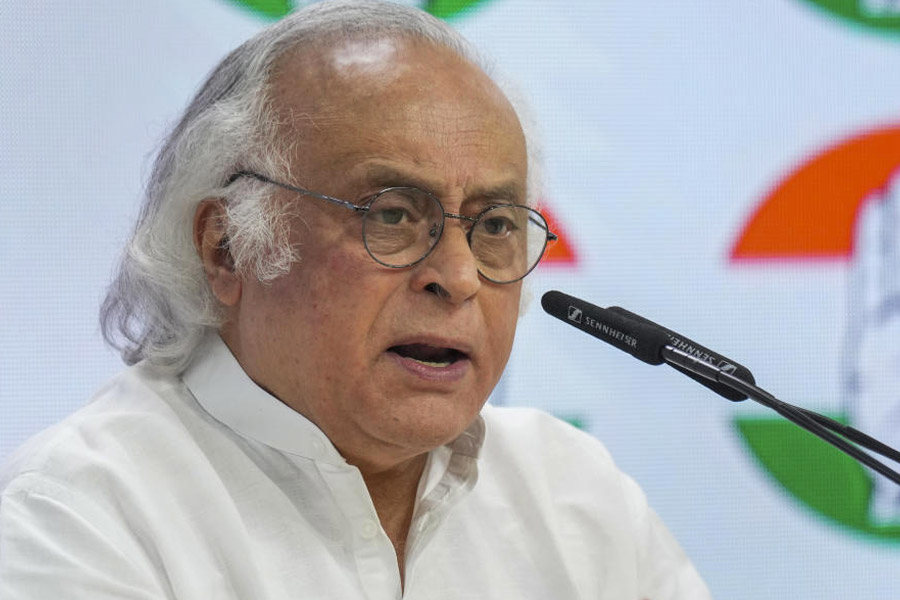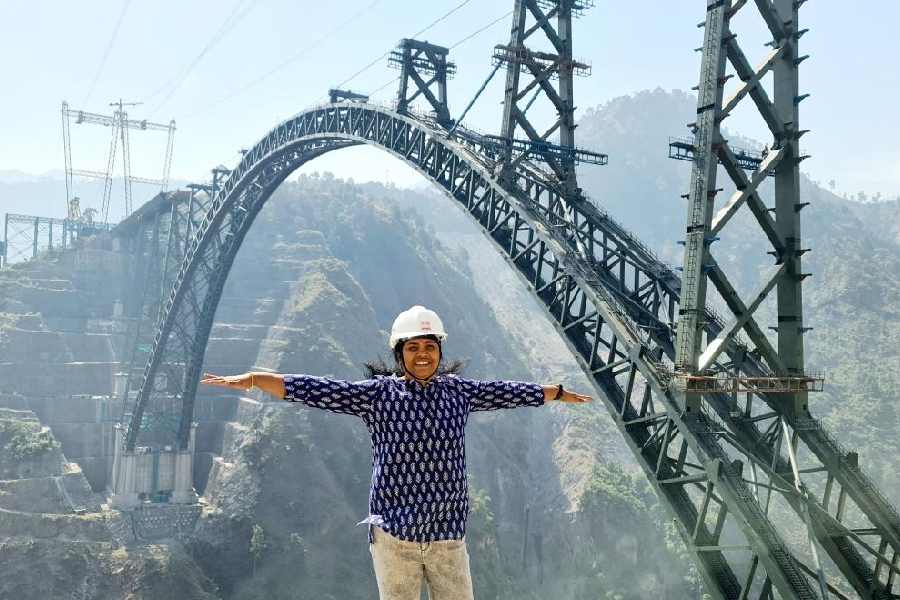 |
 |
| Forest guards (top) on a patrol inside the inundated Dibru-Saikhowa National Park and a submerged house in the Guijan range of the park. Pictures by Ripunjoy Das |
Divisional forest officer (Tinsukia wildlife division) S.S. Rao, who is also in charge of the 765-square-km Dibru-Saikhowa National Park, has made his priorities clear. Dibru-Saikhowa, “one of the paradises on earth,” needs to be preserved and promoted all around the globe. And for that he has adopted a two-pronged strategy.
The first is to evict the residents of Laika and Dodhia, the two forest villages in the core of the park. Second, to concertedly promote the national park in order to bring it on a level comparable with Kaziranga National Park in terms of both tourist attraction and number of visitors.
This is just the beginning of a long-term plan, but gradually results are showing. “Dibru-Saikhowa is a treasure of unique biodiversity which is yet to be properly explored,” says Rao, an Indian Forest Service officer.
Of course, there exist a few problems that have crippled the park over the years. The first covers deficiencies in management. For managing a park of such a size, sufficient numbers of field staff are required for patrolling and other protection duties. But while the management plan prescribes the requirement as 102, the present availability is only 43. Of these, 10 are physically unfit for field duty.
“Again, some of these 43 personnel are also deployed for management of the Bherjan-Podumoni-Borajan wildlife sanctuary spread over an area of about seven square kilometres. There is thus an urgent need for more manpower,” Rao says.
Dibru-Saikhowa national park and biosphere reserve (core area 340 square km and buffer zone 425 square km), situated in Upper Assam’s Tinsukia and Dibrugarh districts, is just 10 km away from Tinsukia town. One of the largest national parks of the region, Dibru-Saikhowa is unique in more ways than one. Situated on the south bank of the Brahmaputra, the park is characterised by littoral and swamp forests, semi-evergreeen forests, deciduous forests and patches of wet evergreen forests.
Dibru-Saikhowa is a haven for many wild animals, comprising 36 species of mammals out of which 12 are listed in Schedule I of the Wildlife Protection Act, 1972. The mammalian species include the Royal Bengal tiger, the Asian elephant, the common leopard, the sloth bear, the Gangetic dolphin, the Assamese macaque, the pigtailed macaque, the Hoolock Gibbon and the capped langur.
The feral horses found in groups at Surkhia Chapori under the Saikhowa range of the park are also unique. The herpeto fauna of this national park includes two species of monitor lizards and eight species each of snakes and turtles. The park is also a birdwatcher’s delight, with more than 350 species of birds recorded.
Severe erosion
The acute shortage of manpower is compounded by both manmade and natural disasters. While the presence of Laika and Dodhia forest villages inside the national park is a menace for the park’s denizens, floods and continuous erosion are also threatening the very existence of one of the top 10 biodiversity hotspots of the country.
“Initially, there was only the village of Laika, with 70-odd houses, and Dodhia with 90-odd houses. Their total land allotment was 238 hectares and 135 hectares respectively. They were established during 1951-52 and 1956-57 respectively,” Rao says. However, with the passage of time, the population has grown phenomenally. At present there are nearly 14,000 people in both villages, mostly engaged in illegal felling of trees, fishing and poaching of wild animals, says Rao.
In fact, only recently the Tinsukia wildlife division seized four trucks used for carrying illegal timber and earth as well as nine boats. Ten smugglers, including an assistant manager of a tea garden, were also arrested. The arrested persons have allegedly revealed that most of the villagers are involved in illegal activities one way or the other.
“The people of these villages have to be shifted and the process of this shifting is being implemented with the involvement of deputy commissioners of both the districts,” adds Rao.
More boats needed
The other major problems of Dibru-Saikhowa are lack of infrastructure and communication gadgets and poor publicity. Since a major portion of the park is surrounded by water, more boats are required. This includes outboard motorboats that will reduce fuel costs and at the same time provide mobility, which is of topmost priority.
Apart from this, there is a requirement for anti-poaching camps, construction of roads inside the park to ease patrolling, modern equipment such as communication gadgets as well as modern weaponry. And as of now there are only two highlands, while there is need for at least 20.
Then there is the unhindered grazing of domestic cattle inside the park, which is responsible for destruction of young salix seedlings, loss of habitat for several endangered grassland birds and spread of diseases to wild animals.
“We have asked villagers to take their cattle outside the park. This will help us a lot. There is also need for the national and electronic media to highlight the problems and prospects of the park,” adds Rao.
Dibru-Saikhowa has not received the importance and attention that it deserves over the past many years. It was accorded national status on March 5, 1999, but it still remains unknown to many.
Still, all is not lost. The Tinsukia wildlife division has come up with a signboard publicity campaign all along the 500-km road from Guwahati to Tinsukia. “We have already designed several catchy slogans to promote the park which will be placed every two km from Guwahati to Tinsukia along National Highway 37,” the DFO says. The funds requirement is nearly Rs 20 lakh and Rao is already in touch with the Wildlife Trust of India and some companies for sponsorship.
Apart from this, there is some good news for the park. The North of England Zoological Society at Chester Zoo in the UK has offered to help the park. Scott Wilson and Alexander Zimmermann, two officials of the zoo, visited the park during March this year. They recently wrote a letter to Ranjeet Dutta, range officer of the Guijan range of the national park, in which they have expressed their desire to help the park.
Chester Zoo is an independent charity with an objective to promote conservation by breeding rare and endangered animals through education, recreation and science.
“We have sent emails to them seeking their co-operation,” says Dutta, adding that the zoo authorities have planned a visit to Dibru-Saikhowa in early November again for advanced discussions.










